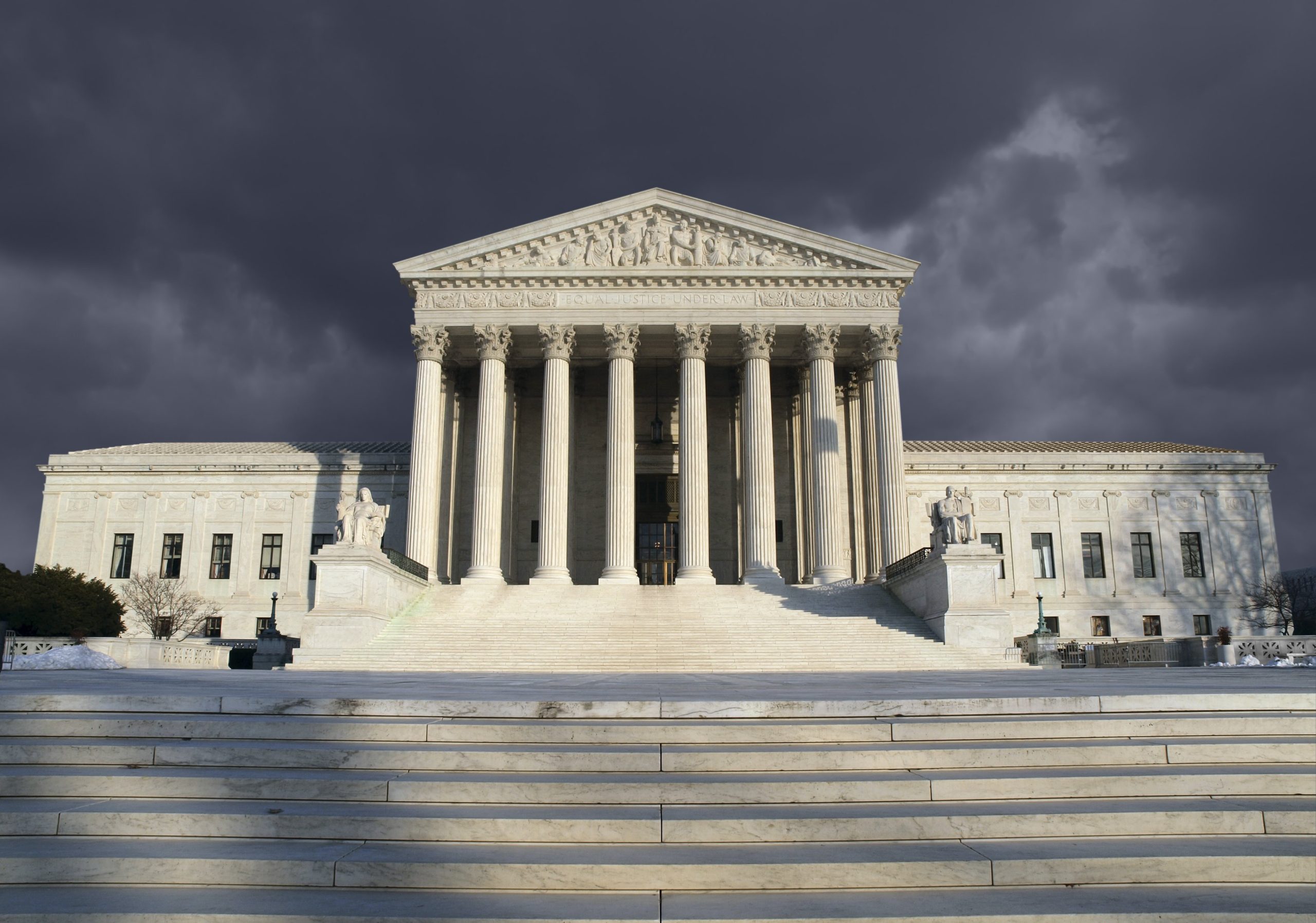Supreme Court Upholds Constitutionality of the Trademark Act’s “Names Clause” in Affirming Refusal to Register TRUMP TOO SMALL | Wolf, Greenfield & Sacks, P.C.
Yesterday, in Vidal v. Elster, the Supreme Court rejected a challenge to the constitutionality of Section 2(c) of the Trademark Act (15 U.S.C. § 1052(c)), which prohibits registration of a mark that “[c]onsists of or comprises a name, portrait, or signature identifying a particular living individual except by his [sic] written consent. . . . .” Steve Elster’s application to register the mark TRUMP TOO SMALL for “shirts,” was rejected by the US Patent and Trademark Office under Section 2(c). The Trademark Trial and Appeal Board affirmed that refusal, but the US Court of Appeal for the Federal Circuit reversed, ruling that, as applied to a public figure like Mr. Trump, Section 2(c) violated the freedom of speech clause of the First Amendment.
In the past five years, the Supreme Court has held two provisions of the Trademark Act to be unconstitutional abridgements of the freedom of speech. In Matal v. Tam, involving the mark THE SLANTS for a music group, the Court struck down the “disparagement” provision of Section 2(a) and in Iancu v. Brunetti, which concerned the mark FUCT for various clothing items, it axed that Section’s “immoral or scandalous” provision. But in those two cases, the Court was dealing with the issue of “viewpoint discrimination” because those provisions blocked registration of marks expressing unacceptable viewpoints but not acceptable ones.
In Vidal v. Elster, however, the Court faced a statutory provision, referred to in the Court’s opinion as the “names clause,” that did not discriminate based on viewpoint but rather is directed to the content of the mark. The Court highlighted this distinction by observing that “[n]o matter the message a registrant wants to convey, the names clause prohibits marks that use another person’s name without consent.” In other words, the question of registration “turns on the content of the proposed mark—whether it is a person’s name.”
Viewpoint-discriminatory provisions are subject to heightened First Amendment scrutiny but the Court concluded that, in view of the “uniquely content-based nature of trademark regulation and the longstanding coexistence of trademark regulation with the First Amendment,” heightened scrutiny does not apply to a content-based provision like Section 2(c).
The Court then considered the history of the “names clause,” observing that the clause has “deep roots”: “Our courts have long recognized that trademarks containing names may be restricted. And these name restrictions served established principles.” The consistent rationale for the “names clause” is the concept that one has a right to his or her own name. This clause “reflects this common-law tradition by prohibiting a person from obtaining a trademark of another living person’s name without consent, thereby protecting the other’s reputation and goodwill.”
In light of this history and tradition, the Court concluded that the names clause of Section 2(c) is compatible with the First Amendment. The Court described its ruling as “narrow,” declining to set out a “comprehensive framework” for assessing the constitutionality viewpoint-neutral trademark restrictions.
Notably, although Applicant Elster’s attempt to register TRUMP TOO SMALL has reached a dead end, nothing in these rulings prohibits Elster from continuing to use the phrase to market his shirts. Only a court has that power. It would seem, however, that Elster’s First Amendment right to comment on, criticize, or mock a public figure like Mr. Trump might well immunize him from such a court ruling.
The Vidal v. Elster decision failed to poke another hole in the Trademark Act, but it is likely not the end of challenges to the constitutionality of the Act’s provisions. There are rumblings in the trademark community regarding whether the dilution-by-tarnishment provision of Section 43(c) is viewpoint discriminatory and thus vulnerable to a First Amendment attack. For now, however, as the Court’s decision did not upset the Trademark Office’s application of Section 2(c), we do not expect this decision to have any significant impact on an entity’s trademark protection strategy.






